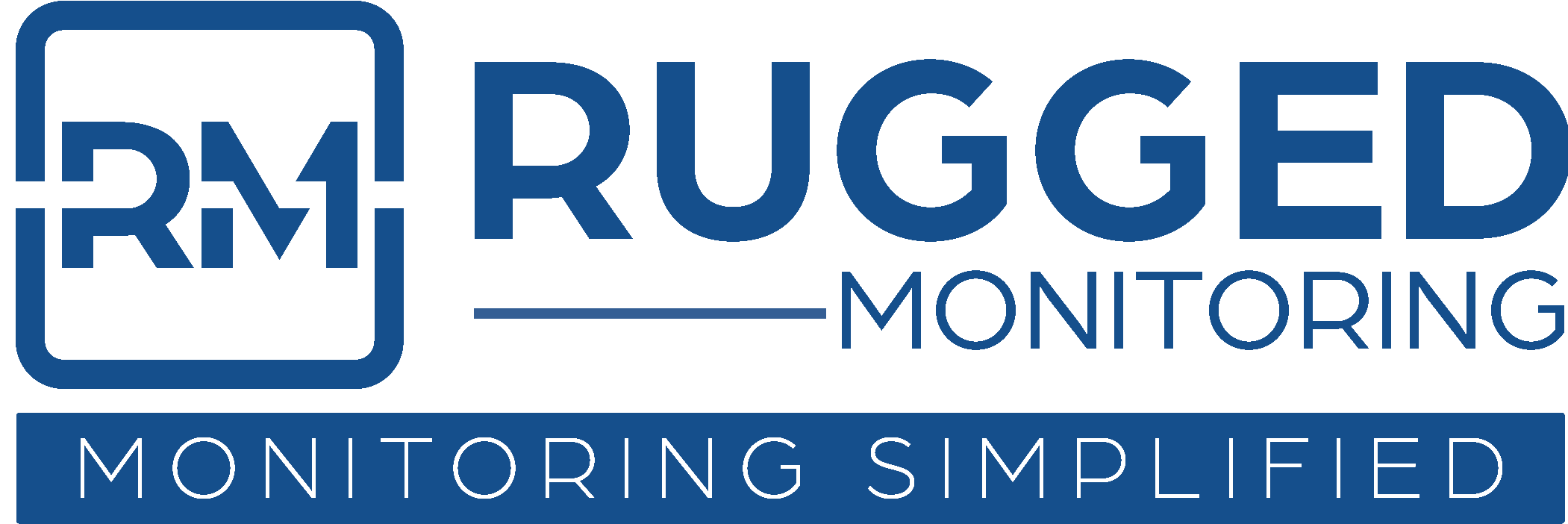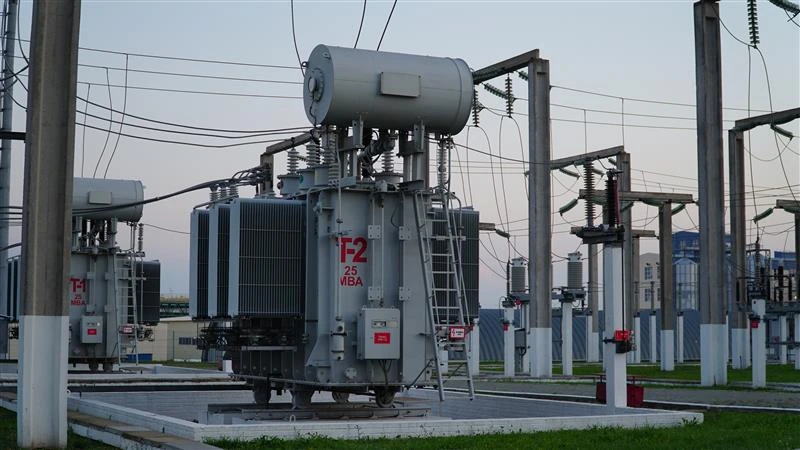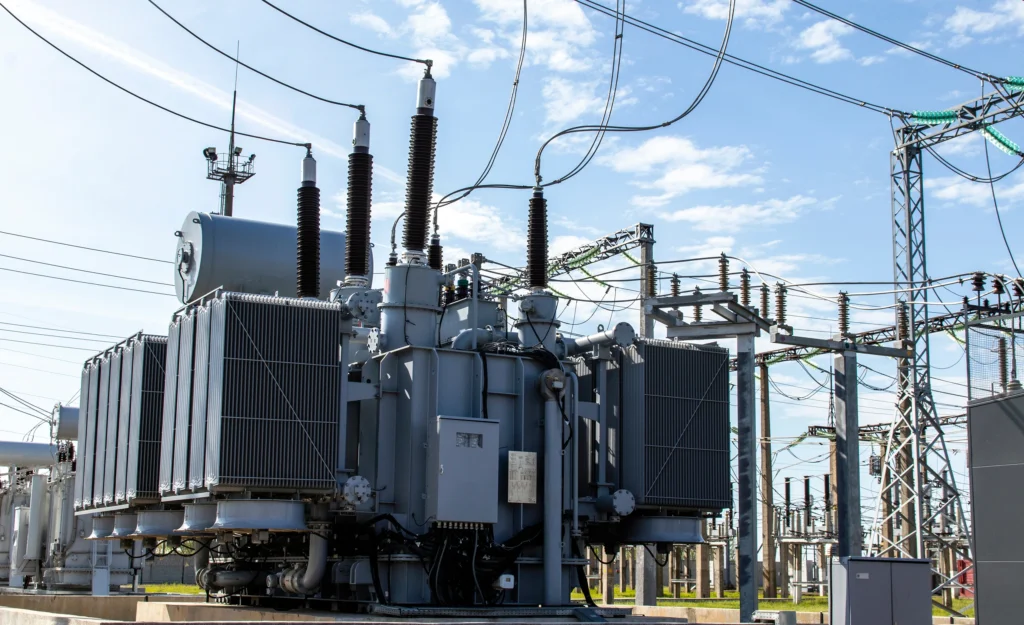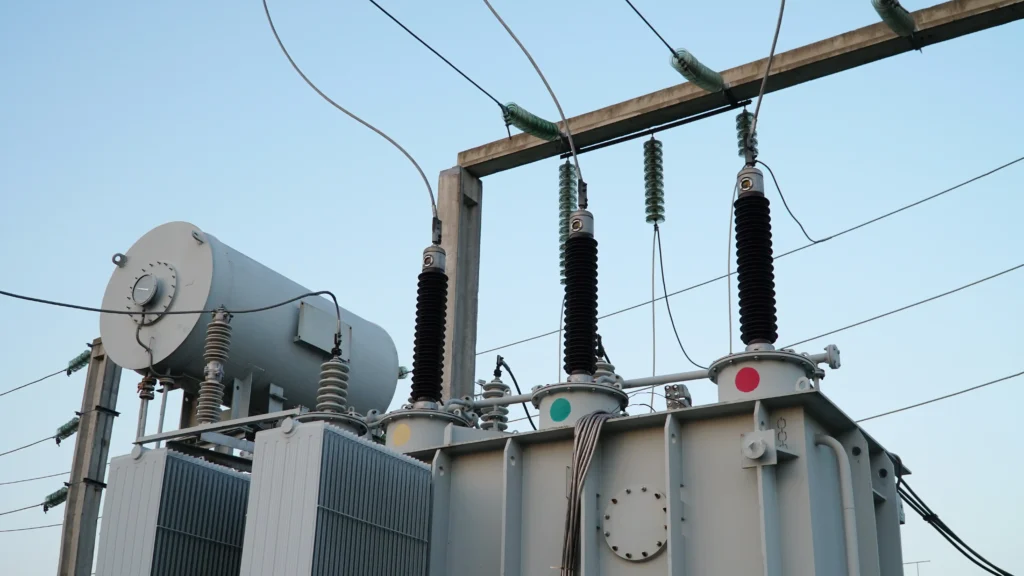Introduction
In the rapidly evolving electrical industry, safeguarding infrastructures has become synonymous with adopting sophisticated technologies. At the heart of this transformation lies the continuous monitoring and maintenance of Gas Insulated Switchgear (GIS), an essential component in safeguarding electrical infrastructure. Leveraging electrical asset monitoring software can remarkably assist companies in optimizing the health and longevity of their electrical assets. This article unveils how adopting these advanced monitoring solutions can revolutionize the management of gas insulated switchgears within an establishment.
The Intricacies of Gas Insulated Switchgear
Understanding the nuances of GIS is fundamental in appreciating the significance of advanced monitoring. As a high voltage substation, GIS plays a pivotal role in the transmission and distribution of electricity, offering advantages such as space-saving designs and enhanced safety measures. When equipped with state-of-the-art monitoring software, it’s possible to avert potential failures and ensure a seamless power supply.
In a realm where the sustainability and reliability of electrical infrastructures are of paramount importance, understanding the intricacies of Gas Insulated Switchgear (GIS) stands as a fundamental requisite. For professionals immersed in the electrical industry, garnering insights into the nuances of GIS not only enhances operational efficacy but also fortifies the strategies aimed at safeguarding electrical infrastructure. In this context, let us delve deeper into the sophisticated realm of Gas Insulated Switchgear, emphasizing its cardinal role in contemporary electrical asset management.
GIS: A Technological Marvel in Electrical Infrastructure
Gas Insulated Switchgear, a pivotal element in the electrical distribution network, embodies a series of electrical components such as breakers, switches, and busbars enclosed in a sealed environment filled with sulfur hexafluoride gas (SF6). This encapsulation ensures a high degree of protection and reliability, paving the way for compact and efficient power systems. Leveraging the state-of-art technologies in GIS can effectively monitor, control, and protect the power network, facilitating a seamless and uninterrupted power supply.
Significance of Real-time Monitoring
At the helm of safeguarding electrical infrastructure lies the aptitude to monitor the GIS in real-time. Advanced electrical asset monitoring software platforms are equipped with tools that provide continuous insights into the performance and health status of GIS components. By employing predictive analytics, these platforms can foresee potential failures, allowing for proactive maintenance strategies that significantly reduce downtime and enhance asset longevity.
Integrating Intelligent Systems for Advanced Diagnostics
In the quest for ensuring optimal performance and safety, integrating intelligent systems in the monitoring process is non-negotiable. These systems utilize a plethora of advanced diagnostic techniques such as Partial Discharge (PD) monitoring, thermal imaging, and GIS condition assessment. These techniques empower electrical engineers and facility managers to make informed decisions based on accurate and real-time data analysis, fostering a culture of reliability and safety.
Research and Development: Breeding Innovation
As the electrical industry strides forward, research and development in GIS technology have escalated. Studies indicate that incorporating advanced monitoring solutions can augment the lifespan of GIS components by 20-30%. Furthermore, the constant innovation in sensor technology and data analytics is fostering avenues for more robust and efficient monitoring solutions, thus catalysing advancements in the industry.
By embracing the intricate dynamics of Gas Insulated Switchgear and integrating sophisticated electrical asset monitoring software, industry professionals can carve a pathway of resilience and efficiency. This harmonized approach not only enhances the operational lifespan of the GIS but also reinforces the overarching goal of safeguarding electrical infrastructure, a cornerstone in fostering a sustainable and technologically advanced future.
Role of Software in Predictive Maintenance
Transitioning from reactive to predictive maintenance is the cornerstone of safeguarding electrical infrastructure. Electrical asset monitoring software provides analytical tools that facilitate real-time data analysis, helping in the early detection of irregularities within the GIS. This predictive approach not only mitigates the risk of catastrophic failures but also significantly reduces downtime and maintenance costs.
In the dynamic ecosystem of power management and distribution, the relevance of predictive maintenance cannot be understated. Electrical asset monitoring software emerges as a cornerstone in facilitating predictive maintenance strategies, particularly when it concerns the intricacies of Gas Insulated Switchgear (GIS). As we navigate through the depth of its role, it becomes clear that software’s capability in leveraging data and analytics stands central to revolutionizing GIS maintenance approaches. Here, we elucidate how software plays a cardinal role in predictive maintenance, fostering a safe and resilient electrical infrastructure.
Unraveling the Intricacies of Gas Insulated Switchgear
Gas Insulated Switchgear represents a complex network of high-voltage components encapsulated within a sealed environment, typically filled with sulfur hexafluoride gas (SF6). These complex systems necessitate meticulous monitoring to ensure operational reliability and longevity. As such, the deployment of advanced electrical asset monitoring software becomes imperative, capable of deciphering the intricacies of GIS with precision and effectiveness.
Harnessing Data Analytics for Predictive Insights
At the core of predictive maintenance lies the potential to harness vast amounts of data generated from GIS components. Electrical asset monitoring software, equipped with sophisticated data analytics capabilities, can analyze this data to garner predictive insights. Through the application of Machine Learning and Artificial Intelligence, these software can pinpoint potential areas of failure, allowing companies to undertake maintenance activities proactively, thus averting unscheduled downtimes and extending the lifespan of assets.
Enhancing Safety Through Predictive Monitoring
Safety stands as a critical concern when dealing with high voltage electrical assets. Predictive maintenance facilitated by intelligent software platforms can significantly enhance safety protocols. By detecting anomalies in real-time, the software aids in averting potential failures that could lead to catastrophic outcomes. Hence, safeguarding electrical infrastructure through predictive maintenance becomes a vital strategy in ensuring operational safety.
Streamlining Operations with Automation
In the context of modern industry, automation emerges as a force multiplier in streamlining operations. Electrical asset monitoring software, integrated with automation capabilities, can automate the process of monitoring and maintaining GIS components. This not only reduces manual intervention but also ensures accuracy and timeliness in maintenance activities, fostering operational efficiency and reducing costs.
Research Findings and Future Prospects
Research conducted in the realm of electrical asset management underscores the potential benefits of implementing predictive maintenance strategies. Studies indicate that companies adopting predictive maintenance can reduce maintenance costs by up to 30% while enhancing the operational efficiency of assets. Moreover, as innovations continue to evolve, the role of software in predictive maintenance is poised for further expansion, promising advancements that could redefine the paradigms of electrical asset management.
By leveraging the prowess of electrical asset monitoring software, stakeholders in the industry can foster a future where predictive maintenance becomes a norm rather than an exception, significantly enhancing the reliability and safety of Gas Insulated Switchgear systems.
Enhancing Safety and Compliance
Ensuring safety and adherence to regulatory compliance is paramount in the operation of GIS. The monitoring software assists in maintaining safety protocols by offering features like remote monitoring and alert systems. These systems are adept at detecting any abnormalities, facilitating timely interventions and thus averting potential hazards. Furthermore, the software aids in complying with stringent industry standards and regulations.
In the highly complex sphere of electrical asset management, safeguarding electrical infrastructure is a prime concern, particularly in dealing with the sophisticated technology that Gas Insulated Switchgear (GIS) encapsulates. The sector has evolved to realize that safety goes hand in hand with compliance to regulatory standards, thereby necessitating the integration of advanced electrical asset monitoring software to address both concurrently. Let us delve deeper into the role of such software in enhancing safety and ensuring compliance within the GIS domain.
A Comprehensive Approach to Safety
As GIS operates at high voltages, the margin for error is significantly diminished. The advent of electrical asset monitoring software has facilitated a more comprehensive approach to safety, helping industries to mitigate risks associated with electrical failures, which can have far-reaching consequences. These platforms employ real-time monitoring and alarm notifications, providing the necessary tools to identify and rectify issues before they escalate, thus safeguarding the infrastructure and the personnel operating it.
Regulatory Compliance – A Step Towards Operational Excellence
Regulatory compliance is not merely a mandatory requirement but serves as a pathway to achieving operational excellence. The contemporary electrical asset monitoring software is adept at helping companies adhere to evolving regulations, thereby playing a crucial role in maintaining the integrity of the Gas Insulated Switchgear. The software assists in documenting maintenance activities, recording incidents, and generating reports that aid in demonstrating compliance with regulatory bodies, thus fostering a culture of transparency and accountability.
Predictive Analysis – A Tool for Proactive Safety Measures
As the industry gravitates towards predictive analysis, the role of software in leveraging this technology to enhance safety cannot be undermined. These sophisticated platforms employ predictive analytics to forecast potential issues based on historical and real-time data. This enables companies to undertake preventive measures, averting accidents and ensuring the smooth operation of the GIS, which is central to safeguarding electrical infrastructure.
Asset Health Monitoring – A Gateway to Enhanced Safety
In the bid to enhance safety, asset health monitoring stands as a vital component. The software facilitates continuous monitoring of the Gas Insulated Switchgear, analyzing various parameters such as temperature, pressure, and partial discharges. This not only helps in maintaining the optimum health of the assets but also serves as a tool to ensure safety, by averting potential failures and mitigating risks associated with equipment malfunction.
Training and Skill Development – Fortifying the Human Aspect
While the technology serves as a backbone in enhancing safety and compliance, the human aspect cannot be sidelined. Electrical asset monitoring software often comes with training modules and simulation features, helping professionals in the field to develop skills and knowledge necessary to operate and maintain the GIS safely and efficiently. By fostering skill development, the software aids in creating a workforce that is competent and capable of navigating the complexities of Gas Insulated Switchgear, thereby playing a pivotal role in safeguarding the electrical infrastructure.
By embarking on a journey that leverages the capabilities of modern electrical asset monitoring software, companies can significantly enhance the safety and compliance parameters associated with the operation and maintenance of Gas Insulated Switchgear, steering towards a future of reliability and operational excellence.
Optimization of Asset Management Strategies
Asset management is catapulted to a new pinnacle with the integration of electrical asset monitoring software. By adopting these systems, companies can formulate data-driven strategies that focus on optimizing the lifespan and performance of the GIS. Through regular assessments and diagnostics, the software enables a more focused and effective asset management strategy, fostering an environment of efficiency and sustainability.
In the ever-evolving landscape of the electrical industry, the need for adept management strategies is more pressing than ever. With Gas Insulated Switchgear (GIS) being at the heart of electrical infrastructures, the onus is on companies to ensure their longevity and optimal performance. It is here that the role of electrical asset monitoring software comes into play, facilitating an optimized approach to asset management. Let us dissect how this software is revolutionizing the asset management strategies pertaining to Gas Insulated Switchgear.
Leveraging Data Analytics for Preventive Measures
Modern electrical asset monitoring software harnesses the power of data analytics to evolve from reactive to proactive asset management. These sophisticated platforms can analyze a myriad of data points in real-time, enabling the early detection of potential faults within the GIS. This predictive approach not only safeguards electrical infrastructure but also mitigates downtime, thereby streamlining operations and enhancing efficiency.
Enhancing Lifespan through Regular Monitoring
The longevity of Gas Insulated Switchgear is often contingent upon meticulous monitoring and maintenance. Electrical asset monitoring software facilitates regular check-ups, monitoring critical parameters such as temperature, pressure, and insulation resistance. This ensures that the GIS operates within safe limits, thereby prolonging its lifespan and preventing unforeseen breakdowns which could potentially have a cascading effect on the entire electrical infrastructure.
Remote Monitoring – A New Age Asset Management Tool
The advent of remote monitoring, facilitated by these software platforms, is a game-changer in the realm of asset management. This feature allows for continuous surveillance of the Gas Insulated Switchgear, even in remote or inaccessible locations, thereby safeguarding electrical infrastructure from a distance. This not only ensures immediate response to any irregularities but also aids in resource optimization, as it negates the necessity for constant on-site supervision.
Inventory Management – Ensuring Availability of Critical Components
An optimized asset management strategy is incomplete without an efficient inventory management system in place. The software aids in tracking the availability of critical components, ensuring that necessary parts are at hand to facilitate timely maintenance and repairs. This plays a pivotal role in preventing prolonged downtimes, thereby ensuring the smooth operation of the Gas Insulated Switchgear and safeguarding the larger electrical infrastructure.
Integration with Existing Systems – Seamless Operation
One of the standout features of contemporary electrical asset monitoring software is its ability to integrate seamlessly with existing systems. This integration facilitates a holistic approach to asset management, where various facets of the GIS operation can be monitored and controlled from a centralized platform. This not only fosters coordinated efforts but also enhances decision-making, as it provides a comprehensive view of the status and health of the Gas Insulated Switchgear.
Through the adept integration of electrical asset monitoring software, companies are better positioned to optimize their asset management strategies. These platforms serve as a beacon, guiding efforts towards enhanced safety and efficiency in managing the complex and critical infrastructure that Gas Insulated Switchgear represents in the electrical industry.
Spurring Innovation and Research
The ongoing advancements in monitoring software are continually fostering innovation in the electrical industry. Companies are now empowered to delve deeper into research and development, pioneering solutions that cater to the dynamic demands of the electrical infrastructure. The software acts as a conduit for innovation, offering insights and analytics that drive research towards creating more resilient and efficient GIS systems.
In a sector where technological advancements are both rapid and relentless, fostering innovation and research is quintessential. The realm of electrical asset management has seen a paradigm shift with the integration of software solutions, particularly in managing and safeguarding Gas Insulated Switchgear (GIS) components. This dynamic subheading seeks to unveil how electrical asset monitoring software has become a catalyst in promoting research and pioneering innovation in the industry.
Harnessing Advanced Analytics
Electrical asset monitoring software has elevated the standard analytical capabilities to new heights. Advanced analytics in these software programs are capable of processing large datasets, thus offering insightful trends and patterns specific to the Gas Insulated Switchgear. This, in turn, enables engineers and analysts to forge ahead with research initiatives that are data-driven and precise, fostering innovation in maintenance strategies and infrastructure safeguarding techniques.
Enabling Real-time Monitoring and Response
The ability to monitor the GIS components in real time has opened up a new frontier for research and development. Researchers can now study the live performance metrics of the Gas Insulated Switchgear, thereby enabling them to work on developing technologies that can further enhance the efficiency and safety of these systems. This real-time insight is invaluable in spurring innovation, as it provides a platform for developing advanced protective relays and diagnostic tools, a stepping stone to safeguarding electrical infrastructure more effectively.
Predictive Maintenance and Artificial Intelligence
The marriage of predictive maintenance strategies with Artificial Intelligence (AI) is arguably one of the most significant advancements in the sector. AI facilitates the prediction of potential faults before they occur, a development that has been pivotal in safeguarding electrical infrastructure. This predictive analysis, enabled by machine learning algorithms integrated into the software, is a hotbed for research, constantly evolving to enhance the reliability and efficiency of Gas Insulated Switchgear.
Driving Sustainability Through Innovation
In the modern era, sustainability is no longer a choice but a necessity. Electrical asset monitoring software plays a pivotal role in driving research towards more sustainable solutions for the industry. Innovations spurred by these platforms are focusing on enhancing the environmental friendliness of Gas Insulated Switchgear, by working on aspects like reducing SF6 emissions, a potent greenhouse gas associated with GIS.
Through meticulous research and continuous innovation, electrical asset monitoring software is fostering a new age of advancements, particularly in the realm of Gas Insulated Switchgear. These efforts are central to enhancing the sector’s capacity in safeguarding electrical infrastructure effectively and efficiently for the generations to come.
Conclusion
The integration of electrical asset monitoring software in overseeing the health and functionality of Gas Insulated Switchgear has proven to be a game-changer in the electrical industry. By fostering predictive maintenance, enhancing safety protocols, and optimizing asset management strategies, these advanced systems stand as a beacon of innovation and efficiency. As we navigate through an era marked by technological advancements, embracing these sophisticated monitoring techniques is not just beneficial but imperative in safeguarding and sustaining the vitality of our electrical infrastructure.



